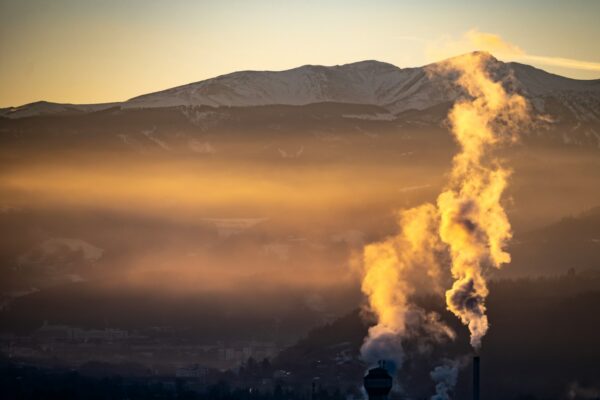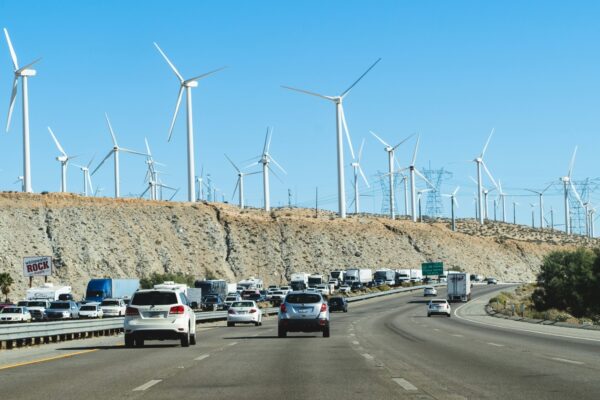Is the 1.5°C limit still in reach? FAQs
The Paris Agreement aims at “holding the increase in the global average temperature to well below 2°C above pre-industrial levels and pursuing efforts to limit the temperature increase to 1.5°C above pre-industrial levels, recognising that this would significantly reduce the risks and impacts of climate change”. Here we address some commonly asked questions.
Share

Have we already exceeded the Paris Agreement 1.5°C limit?
The simple answer is no. By the end of 2020, human-induced global average surface air temperature increase had reached around 1.2°C above pre-industrial levels.
The best estimate from the IPCC’s Sixth Assessment Report (AR6) of Working Group I from 2021 is that, if we followed an illustrative very low emissions scenario (SSP1-1.9), which is roughly in line with reaching net zero CO2 emissions by mid-century, we are ‘more likely than not’ (this means a greater than 50% likelihood) to reach a global average warming of 1.5°C around 2035.
The scenario-based assessment provided in the IPCC AR6 Working Group III report published in 2022, as well as the IPCC Special Report on Global Warming of 1.5°C from 2018, are consistent with these findings.
Regional warming can be higher than the global average. This is the case for the Arctic, for example. Land area in general experiences more rapid warming than the oceans.
The Paris Agreement Temperature Goal, however, refers to global average surface-air temperature increase. Many land area regions are very likely to exceed 1.5°C warming above pre-industrial levels even though the global average may not.
If a single year exceeds 1.5°C warming, is the Paris Agreement 1.5°C limit breached?
No. The Paris Agreement temperature goal is to be understood as human-made temperature change averaged over 20-30 years – in other words to climate change, not variability from year to year. It does not mean temperature changes in individual months, seasons, years – not even over a couple of years. When measured over shorter time frames, temperature change is subject to natural climate variations resulting from, for example, volcanic eruptions, making it difficult to tease out human-made changes from natural ones. As the IPCC AR6 puts it: “The occurrence of individual years with global surface temperature change above a certain level, for example 1.5°C or 2ºC, relative to 1850–1900 does not imply that this global warming level has been reached.”
This dominance of year-to-year variability over short timescales is why climate science in general, and IPCC reports in particular, assess human-made long-term temperature change by averaging global mean temperature over periods of at least 20 years – avoiding the influence of these year-to-year natural variations.
As the world keeps warming and we get closer to the 1.5°C limit, the probability of individual years exceeding that warming level will increase. Natural variability in annual global temperatures around the long-term trend can reach a couple of tenths of a degree, meaning that an individual year might exceed 1.5°C even at today’s level of human-made warming (around 1.2°C). Should the world reach 1.5°C of global warming, it is to be expected that every other year be 1.5°C warmer than pre-industrial levels.
Alternative scientific methods have been established to identify the human-made component in the observed warming signal. Such methods, however, come with uncertainties on the order of 0.1°C. This implies that we will only retrospectively be able to say with certainty whether 1.5°C has been reached or exceeded.
Will we reach the Paris Agreement 1.5°C limit in the next few years?
No. Given what we know about natural variability there is about a 20% chance that an individual year could exceed 1.5° warming in the next five years, with natural variability in that year adding to the underlying warming from human-induced climate change. Considering the recent COVID-related dip and possible recovery scenarios, it appears unlikely that we will reach the 1.5°C long-term limit before 2030.
The question of when 1.5°C of warming might be reached has recently received increasing attention and different estimates have been produced. Different date estimates do not mean there are necessarily scientific contradictions between the assessments. Some reasons for mistakenly concluding that we will reach 1.5°C in the next few of years are: assessments of annual temperatures instead of the human-made long-term warming, use of different historical warming estimates, use of climate projections that have shown to overestimate historical warming, or a combination of these factors.
Can we still achieve the Paris Agreement 1.5°C limit?
Yes, but very stringent emissions reductions in this decade until 2030 and achieving net zero CO2 emissions globally by 2050 are required.
These reductions need to be in line with pathways that the IPCC AR6 Working Group III has assessed to “limit warming to 1.5°C in 2100 with a likelihood of greater than 50%, and reach or exceed warming of 1.5°C during the 21st century with a likelihood of 67% or less“. The IPCC is clear that the world can still get there, and the ongoing energy crisis underscores the need for decisive action to do so.
However, it is also clear that the combined effect of all present policies and commitments for climate action and emission reductions – particularly countries’ 2030 national climate targets, or Nationally Determined Contributions (NDCs) – are completely inadequate for staying below the Paris Agreement’s 1.5°C limit.
If climate action is not ramped up in the short term through substantially strengthened 2030 emissions reduction targets, then meeting the Paris Agreement’s Temperature Goal may become infeasible. However, if countries submit new and updated 1.5°C compatible NDCs and fully implement those NDCs, the 1.5°C goal is still within reach.
Can we wait until 2025 for greenhouse gas emissions to peak?
No. Global greenhouse gas (GHG) emissions have to peak immediately to allow us to limit warming to 1.5°C.
The IPCC’s AR6 Working Group III report concludes that “global GHG emissions are projected to peak between 2020 and at the latest before 2025 in global modelled pathways that limit warming to 1.5°C (>50%) with no or limited overshoot and in those that limit warming to 2°C (>67%) and assume immediate action”. “Before” is the critical word in this formulation. The assessment this is based on was conducted in 5 year increments – so a precise year between 2020 and 2025 could not be provided.
However, the underlying data shows very clearly that emissions drop from 2020 to 2025 in all 1.5°C scenarios, as illustrated in the Working Group III SPM figures SPM.4 and SPM.5a.
Any interpretation that we could wait until 2025 for GHG emissions to peak would be misleading.
Is large-scale atmospheric carbon dioxide removal required?
In order to achieve net zero greenhouse gas emissions as spelled out in Article 4 of the Paris Agreement, net negative CO2 emissions will be required to make up for remaining non-CO2 emissions in hard to abate sectors (for example methane from agricultural production).
However, limiting peak warming to 1.5°C does not depend on large-scale carbon dioxide removal (CDR) – but rather stringent near-term emission reductions and getting to net-zero CO2 emissions globally by 2050, as well as stringent emission reductions in non-CO2 greenhouse gases, particularly methane.
The amount of carbon dioxide removal required will depend on the pace of global progress in reducing emissions; early action to rapidly decarbonise and reduce the overall need for CDR will be essential. However, all modelled pathways that limit warming to 1.5°C rely on CDR either to offset hard-to-abate sectors (such as agriculture, industry processes or aviation) and, if warming exceeds 1.5 °C, to bring global temperature back down to a safer level.
While measures to reduce emissions often come with co-benefits for society (for example, improved energy access, lower costs, cleaner air), the same is not true for many CDR options. If deployed at large scale, CDR technologies could entail negative side-effects across different dimensions of sustainable development. A number of potential CDR options exist, but these are at different stages of maturity and limited progress has been made in planning and deploying them at the scale.
Biological options such as forest planting and ecosystem restoration are already available for scale-up, but are vulnerable to climate change impacts and land-use management decisions, hence their removals are not necessarily permanent. Even in scenarios with lower CDR needs, the necessary pace of scale-up will require international governance systems capable of addressing a range of sensitive issues and challenges, including monitoring and verification of removals, and avoiding negative trade-offs with sustainable development.
Enacting aggressive near-term mitigation is thus key to achieving the Paris Agreement goals and to limit the dependency on future CDR.
Is the new generation of climate models showing higher warming than predecessors indicating that we are much closer to 1.5°C then we thought?
A new generation of climate models (CMIP6) prepared for the latest IPCC assessment report on the physical science basis (IPCC AR6 WGI) published August 2021, projects on average higher warming than previous generations of models. This seems to be largely the result of changes in the way that complex cloud feedbacks are represented.
However, when those models that appear to be “warmer” are evaluated against observed warming over recent decades, it becomes clear that they overestimate historical warming. Therefore, the very high warming models can be ruled out as unrealistic.
The fact that several models overestimate historical warming does not mean that these models are wrong or “worse” than previous generations. There are a lot of useful insights the scientific community can gain from these models, they are just not the best tool to estimate global mean temperature increases (which is also not their sole or primary purpose).
Groups of different models, or model ensembles, that capture recent warming trends, however, represent the best available tool for projecting future temperature change. They have warming estimates very similar to the models assessed in the IPCC AR5, meaning that we are not in fact closer to 1.5°C.
In the IPCC AR6 WGI report, the CMIP6 projections are however not the only line of evidence on which the assessment of future temperature change is based. Rather, it is constructed from a combination of elements. This is the first time that an IPCC report takes this approach: the model projections are constrained by insights on how well the models simulate the past observed warming, as well as by an updated narrower range of the equilibrium climate sensitivity (ECS), another novelty in AR6.
Is it true that we’re running out of the remaining carbon budget?
The remaining carbon budget for limiting warming to 1.5°C is small, and subject to considerable uncertainties. What is clear, however, is that continuing CO2 emissions further deplete the carbon budget and that very stringent mitigation is required to stay within it.
While being key in the long term, the carbon budget alone is not sufficient to determine the near-term warming trajectory. All greenhouse gases and climate forcers need to be considered. Furthermore, condensed messages like ‘we have 10 years left of the carbon budget’ are scientifically problematic as irreducible uncertainties in carbon budget assessments do not provide the basis for such definitive statements.
The carbon budget is based on the finding that global temperature increase scales in an approximately linear way with CO2 emissions over time. This allows us to derive the remaining CO2 budget until a certain amount of warming would be reached.
Notably, carbon budgets are not a pure ‘scientific’ number, but require a range of value judgements to be taken. The IPCC AR6 WGI report estimates a remaining carbon budget of 500 Gt CO2 from the beginning of 2020 for a 50% chance of staying within 1.5°C warming, and 400 Gt CO2 for a 66% chance. These estimates are similar to those in the IPCC Special Report on 1.5°C. This also holds for the total cumulative CO2 emissions up to the time of global net zero CO2 emissions assessed by IPCC AR6 Working Group III (510 GtCO2).
The very large uncertainties with carbon budgets mean that at best they can only provide an orientation around whether a given temperature limit can be met. In addition, carbon budgets do not include assessments on what would be technically and economically feasible or which pathways should be taken to meet warming limits in practice.
Exceeding the best estimate for the remaining carbon budget does not automatically imply that the temperature level will be exceeded in the near-term. Furthermore, the deployment of negative CO2 emissions could bring them back in line with carbon budgets in the longer term. The amount of carbon dioxide removal required differs strongly between different pathways.
Are we already locked into 1.5°C of warming?
It is sometimes argued that due to historical emissions of aerosols from air pollution or climate feedbacks, 1.5°C of global mean temperature increase above pre-industrial levels is already locked into the system. The best available evidence in the peer-reviewed scientific literature suggests otherwise.
Once we reach net zero CO2 emissions, atmospheric CO2 concentrations will not stay constant. They will decline. Thus, the long-term warming resulting from current atmospheric CO2 levels is not of direct relevance for our ability to reach a certain warming target.
Also, not all our CO2 emissions end up in the atmosphere. In fact, the IPCC AR6 WGI report assesses that more than 50% of our emissions are absorbed by the land biosphere and the ocean. These carbon sinks will be affected by climate impacts and warming but will not stop operating after human emissions reach zero.
Atmospheric CO2 concentrations are projected to decline once net zero emissions are reached. The magnitude of this effect has been assessed in a comprehensive study by the zero-emissions commitment model intercomparison project in 2020. While substantial uncertainties remain, including the effect of natural sources of greenhouse gas emissions such as permafrost, all climate models assessed in the study show net zero emissions leading to a decline in atmospheric CO2 concentrations.
How do aerosols and “global dimming” affect our trajectory towards 1.5°C?
Aerosol emissions, like sulphate particles or soot, have a cooling effect on the climate, sometimes referred to as “global dimming.” Reducing human aerosol emissions would thus lead to warming, although the exact magnitude is quite uncertain. The effect on peak warming strongly depends on the speed of the phase out of aerosol emissions and reductions in other emissions such as short-lived climate forcers like methane.
Stopping all human aerosol emissions would lead to a near immediate warming response. However, like all sudden zero emission scenarios, this is hypothetical in nature. While aerosol emissions are projected to decline under emission reduction scenarios, they will not reach zero by the end of the century. More gradual scenarios are thus more realistic.
At the same time, the effect of other climate gases needs to be accounted for when assessing the effect of aerosols. For example, reducing short-lived climate forcers such as methane would lead to a net cooling effect.
A good example is the downturn in emissions related to the COVID-19 pandemic, which has led to a sudden reduction in global aerosol emissions of about 20%. A potential warming spike in response to reduced aerosol emissions, however, was largely balanced by cooling effects of other climate gases.
What about tipping points? Wouldn’t they bring us above the Paris Agreement 1.5°C limit?
“Tipping elements” of the earth system, such as ice sheets, may take on unstoppable dynamics (i.e. melting), once dangerous thresholds are crossed. The exact thresholds are still very uncertain and limiting warming to 1.5°C greatly reduces the risks of crossing those potential “tipping points”.
Tipping elements will exhibit highly non-linear or self-amplifying dynamics once these thresholds are crossed. For some, once triggered, their dynamic will be irreversible over thousands of years.
Every increment of warming increases the risks of crossing these tipping points and amplifying feedbacks, and the risks increase rapidly above 1.5°C warming.
There are several tipping elements identified in the earth system such as the West Antarctic or the Greenland ice sheet, or the Atlantic overturning circulation (read more about them in the IPCC AR6 WGI report). Triggering tipping points could have far reaching consequences. For instance, in an extreme scenario, sea level rise up to 2m by 2100 and 15m by 2300 due to the crossing of ice sheet tipping points cannot be ruled out.
For very high levels of warming (significantly above 2°C), potential tipping points in cloud formations, the Amazon rainforest, or massive permafrost loss could also further amplify climate change globally. The exact threshold for many of those tipping points is not well established, nor is the speed of their system response (ice sheets, for example, would melt away over hundreds and thousands of years).
However, based on the best available evidence assessed in the” IPCC AR6 WGI report, there is no evidence for a tipping point that would be triggered at or below 1.5°C of warming on a planetary scale that would lead to self-amplified warming effect that would push the world past the 1.5°C limit. If global mean warming above 2°C is exceeded and sustained then this risk rapidly escalates.















